With the right ingredients on hand, making homemade Chinese food is easier than ordering take-out and it tastes so much better. In this post, I’m sharing ten basic ingredients for Chinese cooking including how to store them and where to buy them. Plus, I’m including my favorite easy Chinese recipes so you can put all of your ingredients to use.
Basic Chinese Sauces and Spices
If you want to make more Chinese dishes at home, which is always better and cheaper than ordering take-out, you will need some basic ingredients so I’ve gathered up all of the essential Chinese ingredients I use in my recipes. With the following ingredients on hand, you can make so many delicious and easy Chinese recipes.
This list is not exhaustive, as many recipes will also call for fresh ingredients, so think of this list as your 10 staple Chinese ingredients to keep stocked. Most of these ingredients have a long shelf life, so once you’ve bought them, they will last! For each ingredient, I share the best way to store them as well as where to buy them.
Soy Sauce (Light and Dark)
Soy sauce is probably the most familiar Chinese cooking ingredient. It’s made from soybeans, wheat, salt, water and Aspergillus (for fermenting). It is used as a seasoning in Asian dishes. When you add soy sauce to a dish it adds sodium and imparts an earthy and umami flavor. There are a lot of different kinds of soy sauce, but the most common ones are light soy sauce and dark soy sauce.
- Light soy sauce is what is commonly used in home-cooked Chinese-American dishes. If the type of soy sauce is not specified for a Chinese recipe, you should use light soy sauce. It has a thin consistency and is a lighter brown in color. Some light soy sauces are low-sodium, which is indicated on the package.
- Dark soy sauce has a richer and more complex flavor. It is fermented longer and is dark brown or black in color. Despite its darker appearance, it is usually less salty than regular light soy sauce.
How to store soy sauce: You can store unopened soy sauce in a cool and dark place like a pantry or cupboard for up to 3 years. Opened soy sauce can be stored in a cool dark place or in the refrigerator for about 1 year.
Where to buy soy sauce: Light soy sauce is widely available in the US at most mainstream grocery stores, Amazon* and Asian markets. Dark soy sauce can be harder to find depending on where you live but can be found at Asian markets and Amazon*.
Oyster Sauce
Oyster sauce is just what it sounds like – a sauce made from oysters. It’s the sauce most often used in Chinese stir-fry dishes. It’s a dark-colored sauce with a syrupy texture that has a sweet and salty flavor. Like soy sauce, oyster sauce is rich in umami flavor and very savory.
How to store oyster sauce: Store unopened oyster sauce in a cool, dark place. Once opened it needs to be stored in the refrigerator where it will keep for about six months.
Where to buy oyster sauce: Depending on where you live you may be able to find oyster sauce at a mainstream grocery store or look for it at your local Asian market. You can also buy it on Amazon*.
Hoisin Sauce
Hoisin sauce, also known as Chinese BBQ sauce, is a savory sauce with sweet and spicy notes. It has a thick consistency and is used in stir-fries, marinades and grilled dishes. If you’ve ever had Peking duck you’ve probably had hoisin sauce as it’s the sauce that is served alongside the crispy-skinned duck. It’s also the key ingredient in the filling for Chinese lettuce wraps.
How to store hoisin sauce: Like soy sauce, unopened hoisin sauce should be stored in a cool, dark place. Once opened, store it in the refrigerator where it will keep well for up to a year.
Where to buy hoisin sauce: If you can’t find hoisin sauce at your regular grocery store, you can find it at Asian markets or on Amazon*.
Cornstarch
Cornstarch is a type of starch that’s used most often as a thickener. In Chinese cooking, it’s used in a variety of ways:
- If you’ve ever had a beef or chicken stir-fried dish at a Chinese restaurant and wondered how the meat turned out so velvety and tender, most likely they coated the meat in cornstarch before cooking it. This is often what separates restaurant dishes from homecooked Chinese dishes. The simple step of coating the meat in cornstarch goes a long way in tenderizing the meat so, once stir-fried, it melts in your mouth.
- Cornstarch is also used in frying meat. Dredging meat in cornstarch before frying it results in a super crispy exterior that can stand up to the sauces the fried meat is tossed in.
- It’s also used as a thickener for stir-fry sauces, Chinese soups, and other glazes and sauces.
How to store cornstarch: Keep cornstarch in the pantry and keep it away from moisture. Properly stored in its original container with the lid closed, cornstarch will keep indefinitely.
Where to buy cornstarch: In the US you can find cornstarch at pretty much any grocery store. Look for in the baking aisle near the flour and other baking ingredients.
Sesame Oil
Sesame oil is used as a cooking oil and as a finishing oil in Chinese cooking. It has a high smoke point so it’s a good cooking oil for stir-fries. Often, sesame oil is used to add flavor and is drizzled over a dish before serving. It has a distinctive nutty flavor and aroma.
How to store sesame oil: Store it like you would other cooking oils – in a cool, dark place like a pantry or cupboard. Opened sesame oil will keep for up to six months.
Where to buy sesame oil: Most grocery stores carry sesame oil or you can order it on Amazon*.
Chili Sauce
There are a variety of chili sauces, oils and pastes used in Chinese cooking to add flavor and spice.
- Chili oil is made from chili peppers and is often used for spicy dishes, especially ones from Sichuan cuisine.
- Sriracha chili sauce, which is a popular condiment, is made of chilis, vinegar, garlic, sugar and salt. The flavorful sauce can add a boost of flavor and umami to stir fry dishes.
- Chili garlic paste is made mainly from chilis and garlic and has a thicker texture. It is often mixed in with other ingredients to create a sauce for stir fries and noodle dishes.
- Fried chili in oil is a popular condiment and often used as an ingredient in dipping sauces.
How to store chili sauce: The majority of chili sauces need to be refrigerated after opening, but check the label to make sure. Chili garlic paste and sriracha do not need to be refrigerated and can keep for a few months in a dark cupboard.
Where to buy chili sauce: Most grocery stores in the US carry a few varieties of chili sauces and they are available on Amazon.*
Rice Vinegar
Rice vinegar is made from fermented rice and adds a lightly sweet note to Chinese dishes. It’s acidic (like lemon and lime and other vinegars) but its flavor is delicate and subtle unlike other types of vinegar. It’s used in a variety of hot and cold Chinese dishes including marinades, stir-fry sauces, and salads.
How to store rice wine vinegar: Like other types of vinegar, you can store rice vinegar in a dark and cool place, like a pantry, where it will keep for up to two years.
Where to buy rice wine vinegar: In the US, it’s available at most grocery stores.
Shaoxing Cooking Wine
Shaoxing cooking wine is also made from fermented rice and is used as a cooking wine in Chinese cuisine. Shaoxing cooking wine has alcohol and a strong flavor. It’s used in stir-fries, sauces, and braised dishes and adds a rich flavor.
How to store shaoxing cooking wine: It will keep well in a cool, dark place for a few months or you can store it in the refrigerator to extend the shelf life.
Where to buy shaoxing cooking wine: Depending on where you live you may be able to find it at mainstream grocery stores. If not, you can find it at Asian markets or you can order it from Amazon*. A common substitute for shaoxing cooking wine is dry sherry.
Five-Spice Powder
Five-spice powder is a combination of different spices. There are many variations, but it usually includes star anise, cloves, cinnamon, Sichuan peppers, and fennel seeds. Other variations sometimes include ginger or other types of pepper. It’s commonly used with meats, as a rub, marinade or for braised dishes. Sometimes it’s added to the breading for fried dishes, too.
How to store five-spice powder: Like other spices, keep it in a cool, dry place. Stored in its original container ,it will keep for about one year.
Where to buy five-spice powder: Five-spice powder is widely available in the US so check the spice aisle at your favorite grocery store. You can also order it from Amazon*.
White Pepper
White pepper is used in Chinese cuisine primarily for its flavor, which is different from black pepper. The flavor is a little hotter but less complex than black pepper and it’s most often added to dishes after the cooking process.
How to store white pepper: White pepper can be bought whole or ground and both types should be kept in a cool, dry place. Whole white peppercorns will last longer than ground white pepper and both tend to go stale faster than black pepper.
Where to buy white pepper: In the US, ground white pepper is widely available, but if you want whole white peppercorns you may need to visit your local Asian market to find it. Or, you can order ground white pepper* and whole white peppercorns* on Amazon.
Easy Chinese Recipes to Try
Once you have your pantry and refrigerator stocked with basic Chinese cooking ingredients there are so many Chinese recipes you can make. I’ve gathered up some of my favorite recipes which also happen to be easy to make. I hope you find some new homemade Chinese food recipes to try!
Spicy Hunan Beef | This popular Chinese beef dish features incredibly tender slices of steak cooked with chili peppers, garlic and cumin. It’s spicy, flavorful and tastes just like the one served at restaurants.
Mapo Tofu | Mapo Tofu is a popular Chinese dish and Sichuan classic. This tofu dish has a unique blend of chilis and spices to create a sauce that is spicy, fermented, and mouth-numbing.
Crispy Salt and Pepper Tofu | When we go to Chinese restaurants, we love to order crispy salt and pepper tofu, but it’s also quite easy to prepare at home. The tofu has a crunchy exterior and is soft and silky on the inside.
Sweet and Sour Chicken | One problem with sweet and sour chicken is keeping the chicken crunchy even when it’s been drenched in sauce. My version has a secret ingredient that keeps the chicken crispy so you get the best of both worlds – crunchy chicken coated in the sweet and sour sauce.
PF Changs Chicken Lettuce Wraps | This is a homemade copycat recipe for PF Chang’s chicken lettuce wraps. They are easy to make and taste like the restaurant version.
Black Pepper Beef | This 30-minute dinner is packed with flavor and easy to make. Tender slices of beef are coated in a black pepper sauce and stir-fried with onions and peppers.
Instant Pot Chinese Steamed Eggs | Steaming eggs is a popular method for cooking eggs in Chinese cuisine. Eggs are whisked with chicken broth and steamed until cooked, creating a creamy, savory custard. When made correctly, the egg texture is extremely light, delicate and silky. I’ve discovered that using an Instant Pot to steam the eggs is a fool-proof way to make them!
Stir Fry Garlic Broccoli | This is one of my favorite Chinese dishes. It looks very plain and simple, but it’s so full of flavor. The broccoli is a vibrant green color, incredibly crunchy and coated in a delicious garlic sauce.
Sichuan Spicy Wontons | Wontons are coated in a very flavorful spicy sweet chili oil sauce. This popular Sichuan dish is comforting, warm, and perfect for winter. If you want something not spicy you might like to check out my Wonton Soup.
Kung Pao Chicken | Kung Pao Chicken is a Chinese dish that has an authentic Sichuan version as well as a popular Americanized version. This version is more akin to the Sichuan version. It’s a simple stir-fry, with very few ingredients, that is easy to put together. I also have a delicious Kung Pao Shrimp recipe you might like, too.
Crispy Orange Beef | My family and friends love when I make this crispy orange beef. Lightly fried and tender strips of beef are coated in a savory orange sauce that tastes delicious over a bed of rice.
Salt and Pepper Wings | Salt and Pepper chicken wings is a popular dish at Chinese restaurants and are often ordered in bulk for Asian potluck parties. The crispy wings are tossed in a garlic, red chili, white and black pepper mix – they have so much flavor! I’ve also made Baked Salt and Pepper Wings that are just as crispy if you don’t want to fry the wings.
Chinese-Style Garlic Green Beans | This is another popular Chinese side dish you can easily make at home. I share two versions – one that is more traditional and similar to what you get at a restaurant and a healthier version that doesn’t use as much oil.
General Tso’s Chicken | This is a popular Chinese-American dish, consisting of crispy fried chicken cubes coated in a salty, slightly sweet, and mildly spicy sauce made with rice wine vinegar, hoisin sauce, soy sauce and sesame oil. If you want something lighter, I also have a recipe for Baked General Tso’s Chicken you might like to try.
Chinese Fried Rice | Learn how to make Chinese fried rice at home and you’ll never order it for take-out again. It’s so easy to make and you can customize it with different ingredients to suit your tastes.
Mongolian Beef | This is another easy beef dish you can make at home. Sliced beef is coated in a savory sauce made with soy sauce, brown sugar, garlic and fresh ginger.
Soy Sauce Eggs | I grew up eating soy sauce eggs and I still love them. They are often eaten for breakfast or served as an appetizer or side dish. The hard-boiled eggs are stewed in soy sauce flavored with five-spice powder, which gives the eggs a delicious flavor.
Smashed Cucumber Salad | A dish that involves smashing has got to be fun right? Smashed Cucumber Salad is a simple, flavorful, cold marinated Chinese-style cucumber salad that uses a knife smashing technique to cut the cucumbers. The refreshing dish comes together in about 5 minutes and is extremely addictive.
Chinese Pepper Steak | Pepper Steak is an easy stir-fry dish. Tender slices of beef are cooked with bell peppers in a thick savory sauce. This popular Chinese-American dish can be made in less than 30 minutes and tastes better than take-out.
Crispy Golden Pork Belly | I love crispy pork belly and had to try a lot of different recipes before I figured out the best way to make it (no need to score the skin or let it dry overnight!). This recipe uses a special technique so that the pork skin turns out wonderfully crispy and delicious.
Instant Pot Lo Mein | Chinese lo mein is a stir-fried noodle dish that usually requires quite a bit of oil. This healthier version has all the flavors from the original but without all the oil. I also use my Instant Pot to make it, so it’s even easier.
Szechuan Beef | This spicy dish is easy to make at home. If you love spicy beef coated in a savory sauce, you have to try this recipe.
Sesame Noodles | These Chinese-style sesame noodles are delicious year-round, but I especially like them during the spring and summer. The noodles are meant to be eaten cold and are tossed in a very simple, easy, and flavorful sesame sauce.
*Some of the links contained in this post are affiliate links. Much like referral codes, this means I earn a small commission if you purchase a product I referred (at no extra charge to you).

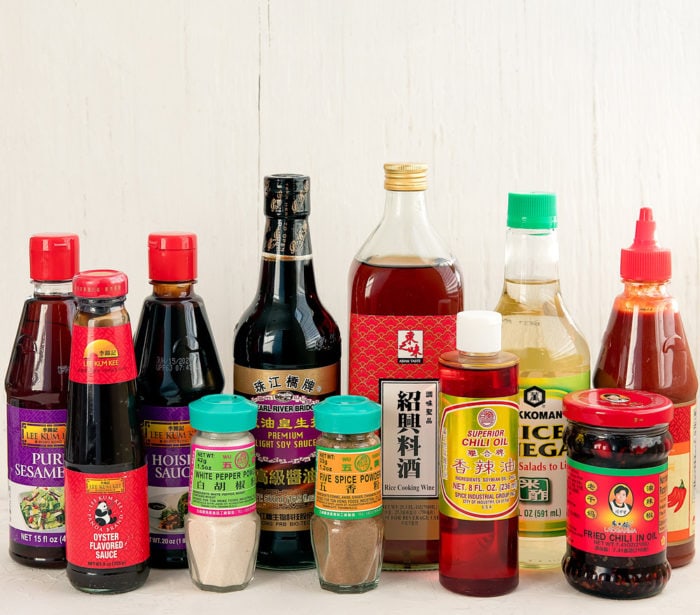
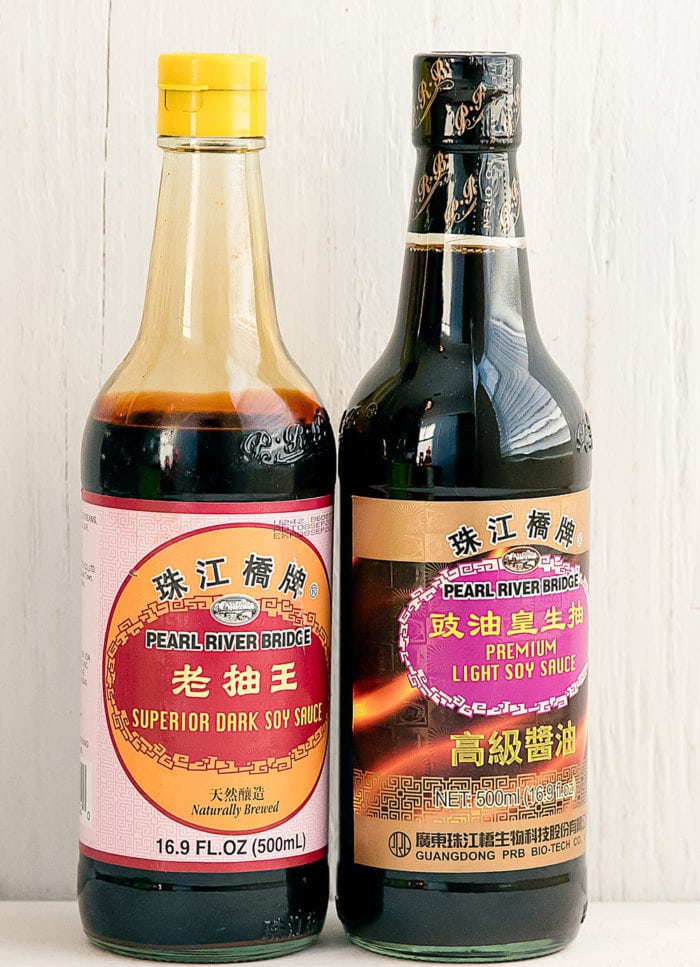

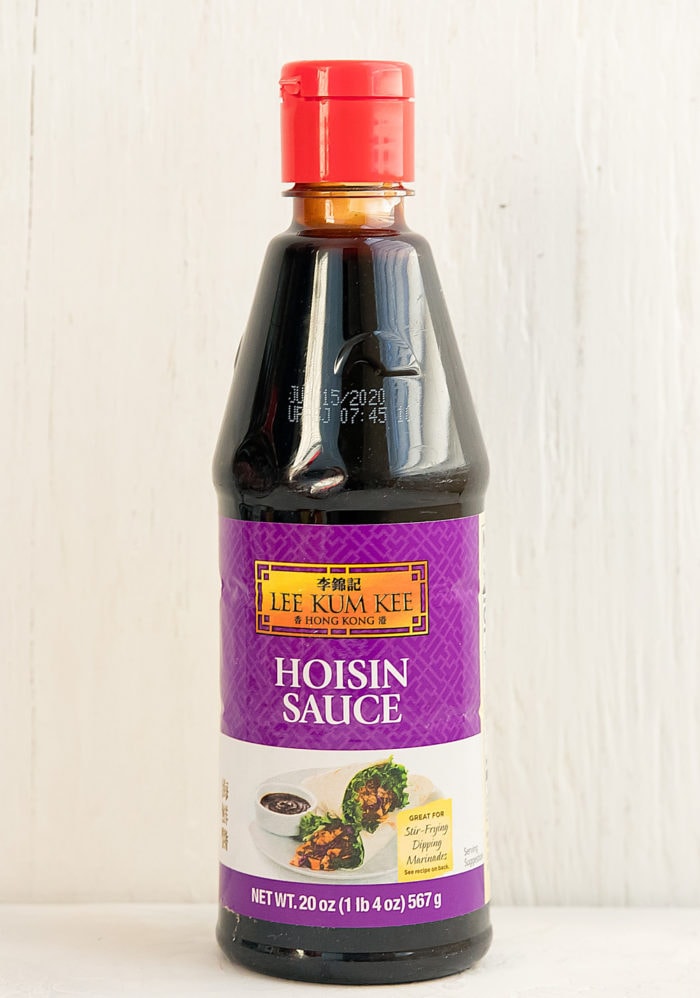
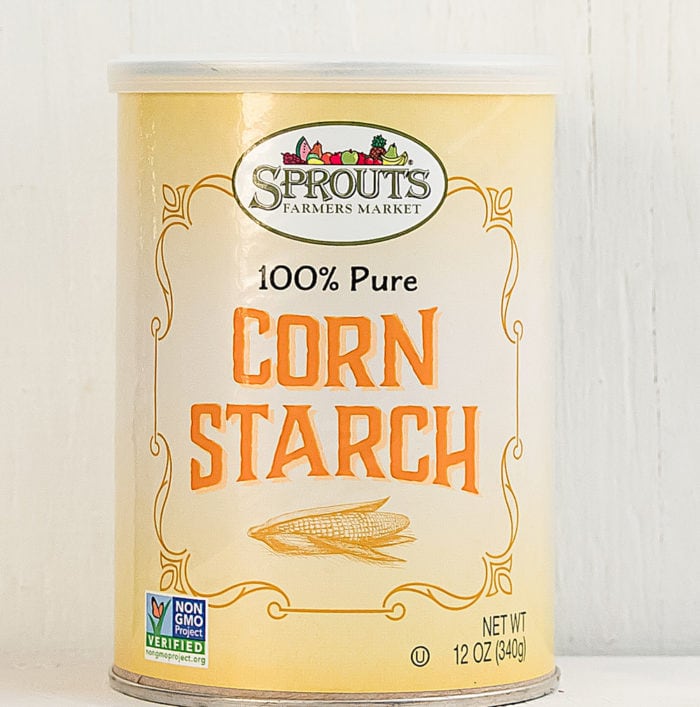
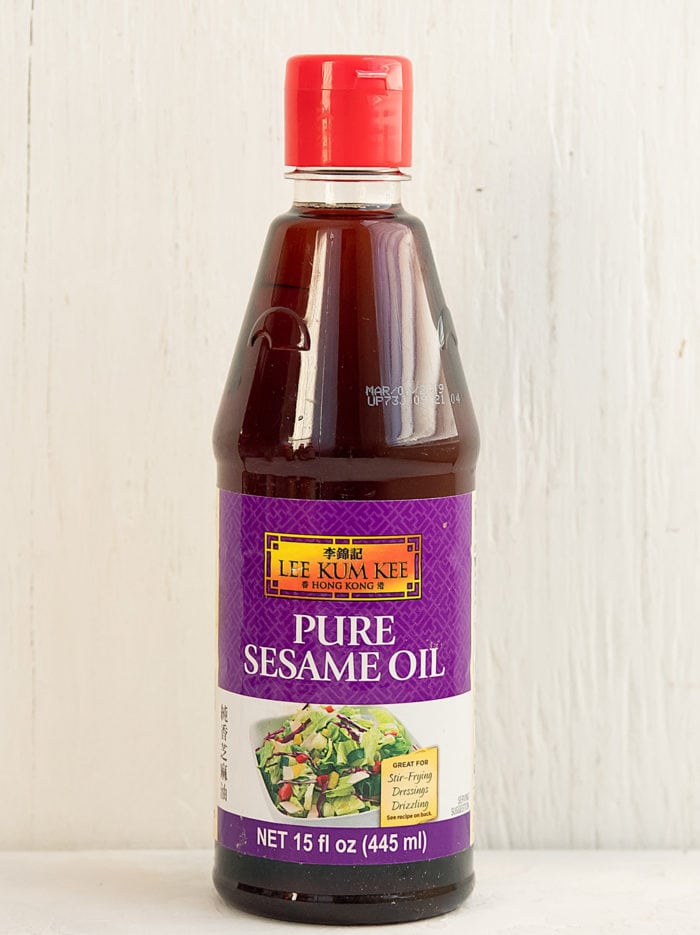

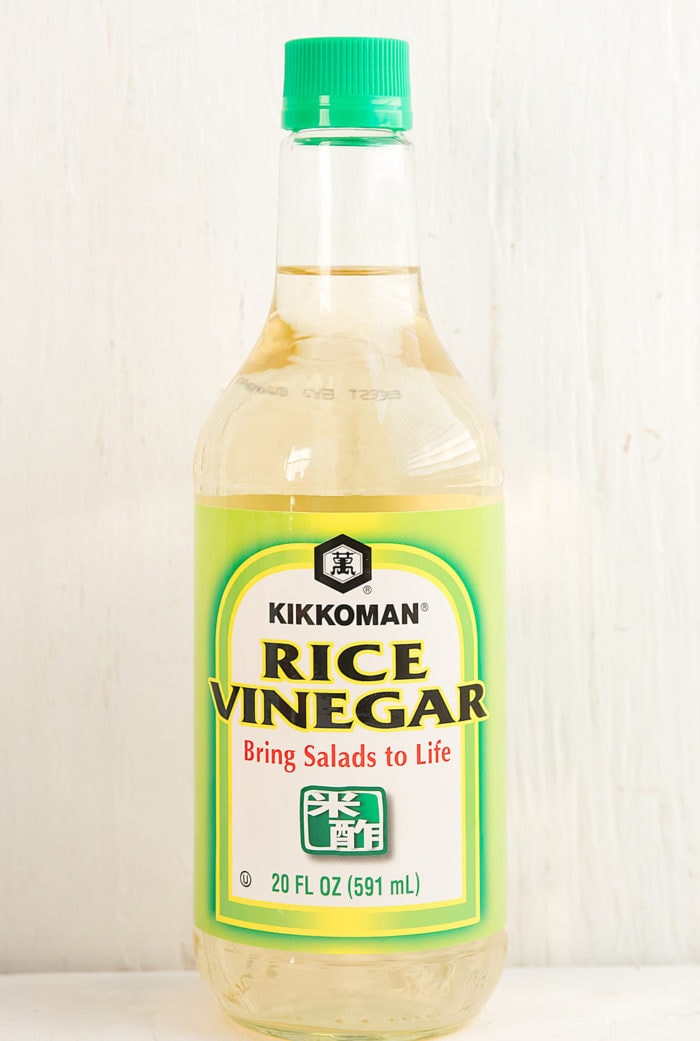
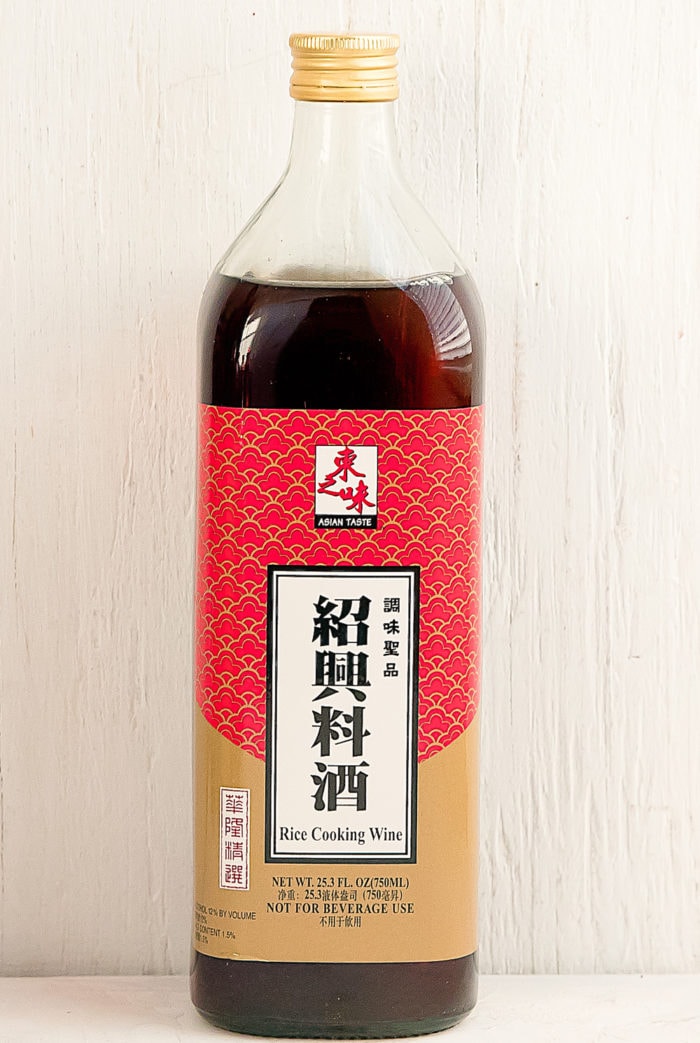
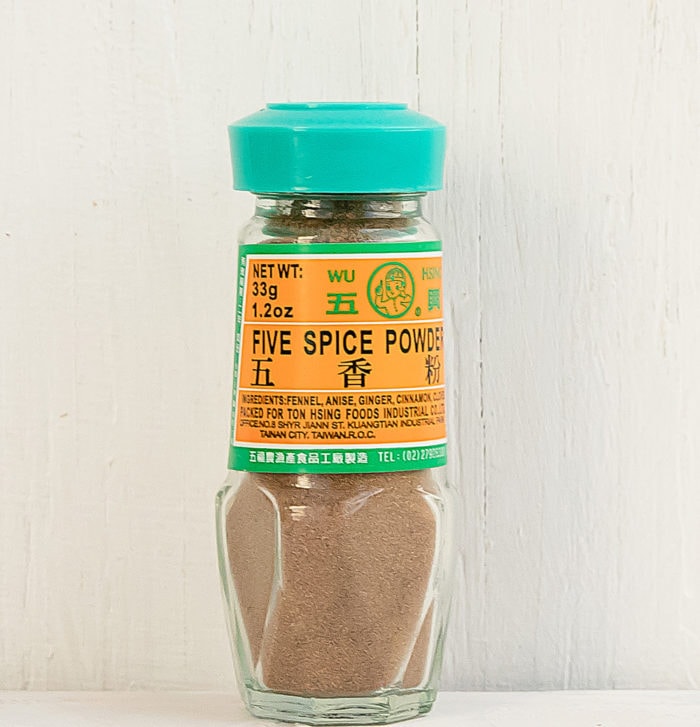
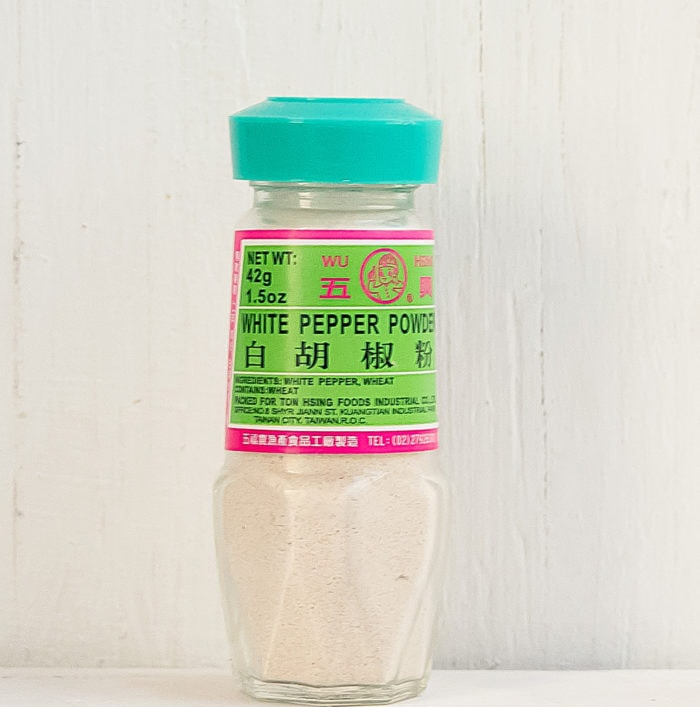

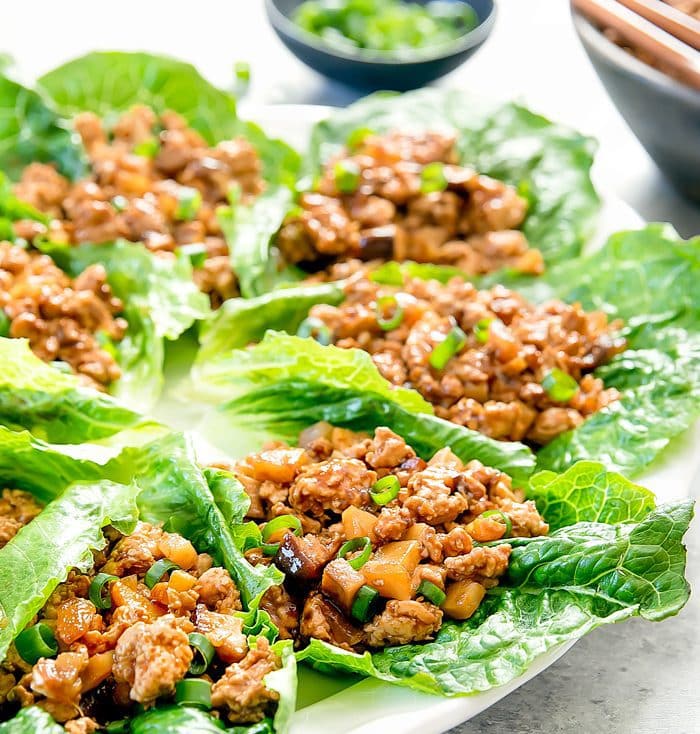
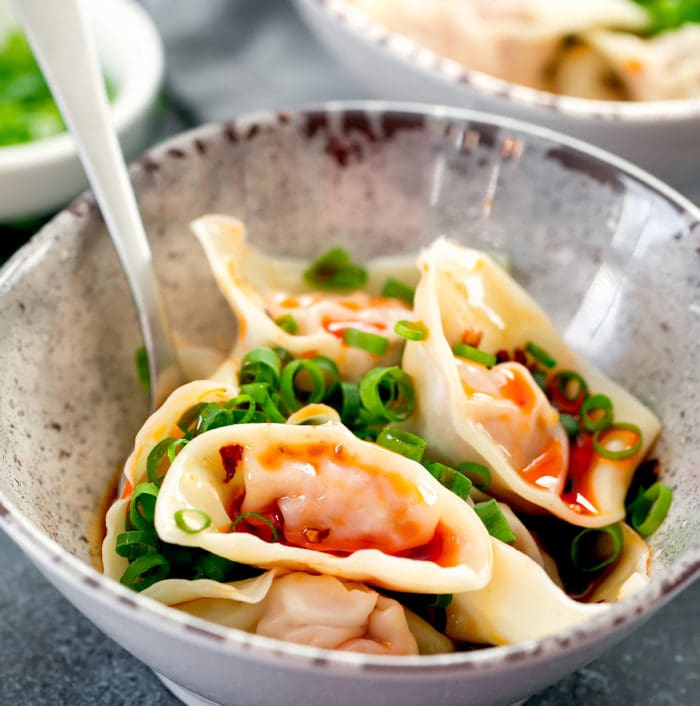

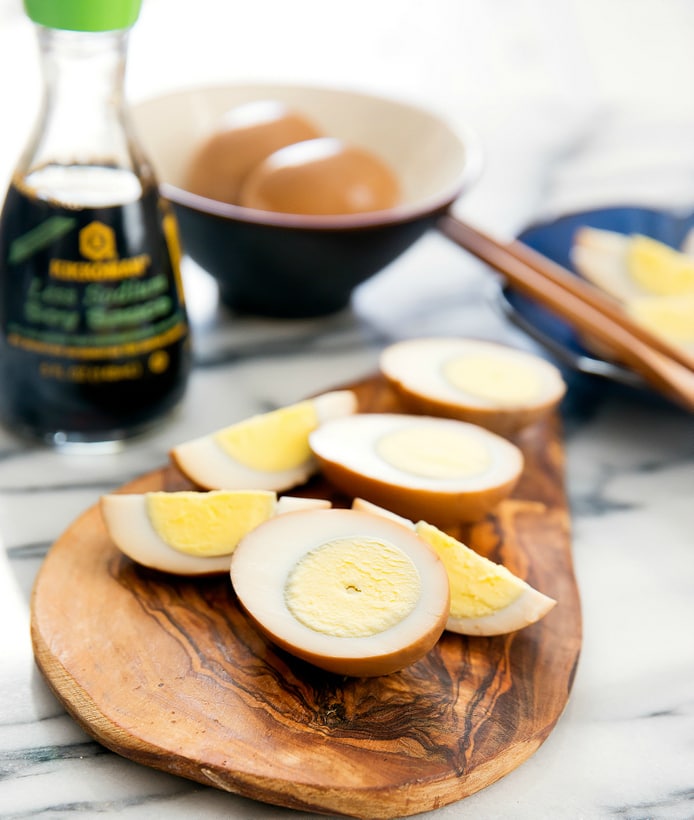
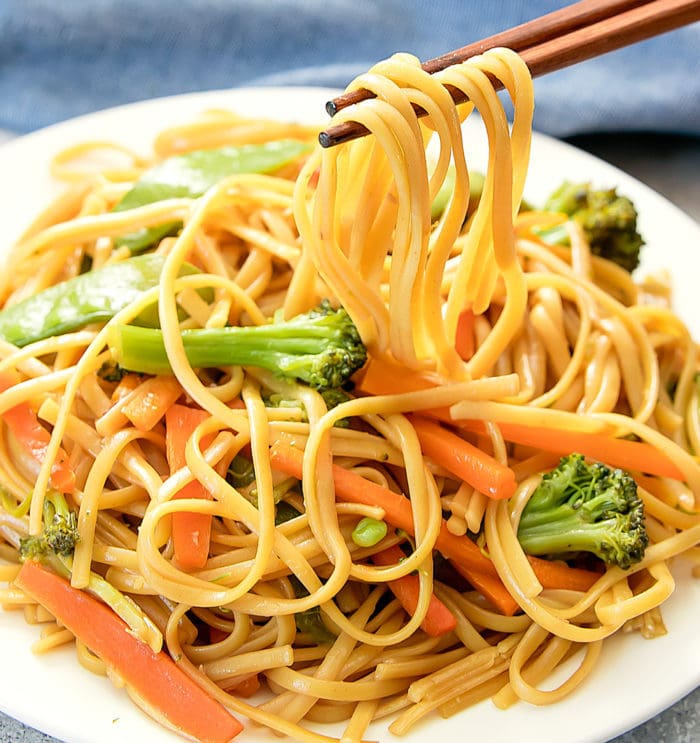

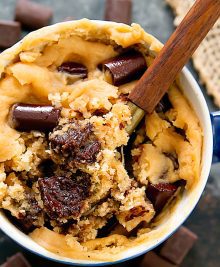
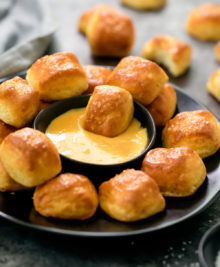

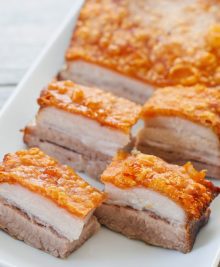
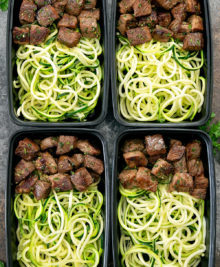

Excellent explanation of basic Chinese food
Thanks ??
You’re welcome!
thank you
You’re welcome!
I’m most thankful for this info. I use few of the general Chinese staples but wanted a list and here I got it when I subscribed! ?. Just wondered: Kikkoman vinegar (Japanese) was suggested (easily available in supermarkets) but is there a Chinese brand you would use?
We like Kong Yen – hope that helps!
These chinese cooking ingredients are absolutely essential. I would also love to add Kikkoman Naturally Brewed Tamari Soy Sauce, its flavor and color are ideal for recipes that features a delicate, but with refined flavors. Not to mention, its more aromatic.
Thanks for your easy tasty recipes, Kirbie. I love Chinese food and would eat it everyday if I could. I lived in Taiwan for a year and have visited China where I did eat it everyday.
Glad you’re enjoying the recipes!
I absolutely loved the info on the basic ingredients needed to make oriental dishes!!! This was great to know so I’m not running around and trying to figure out what to buy!
Thanks also for the recipes! Can’t wait to start cooking!
I’m so glad you found this helpful!
I love this Info!!! So very hepful! Thank you for your time and help for us that love your native food but alas don’t really have the know how to cook it right….following these instructions I feel like in time I’ll be a pro! The lo mein was delish!!
I’m so glad you found this helpful!
This list is SO helpful. I live for Chinese food; especially those that does not requires many hours to prep and cook. Thanks so much for your awesome receipes and all your good work!
I’m so happy you found this helpful!
Thank you for this list. I really love Chinese food.
You are welcome!
Very helpful tips and recipes.
I’m glad you found it helpful!
Shaoxing “cooking” wine (in fact, anything labelled “cooking wine”) as sold in grocery stores is loaded with extra salt – the entire concept of “cooking wine” came from the Prohibition era in the US, when wines were loaded with salt to make them unpalatable to drink plain, but more-or-less acceptable to use in cooking,. Proper Shaoxing wine without the added salt is likely only to be found in wine/liquor stores in areas with large Chinese communities. As noted, dry sherry can be used as a substitute if you don’t have access to the real thing.
it’s true that most rice cooking wine available in the US has added salt. However, such a small amount is used in the majority of recipes that it does not make a big difference. If there is a recipe that requires a significant amount, like sesame oil chicken soup which is made almost entirely from rice wine, then I would specify in the recipe to find and only use the unsalted version which is sold at Asian markets. I don’t think people need to go out of their way to buy the unsalted one for most recipes.
I love this round-up! This post should be on everyone’s grocery list!! Another item I always keep in my pantry is dark vinegar – only the Zhenjiang brand 🙂
oh me too! I was debating whether to add that with the rice vinegar. So glad you enjoyed the round-up